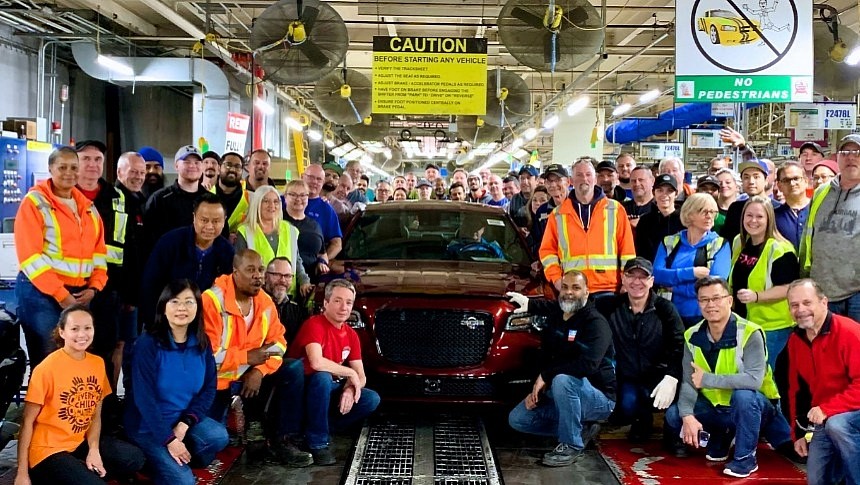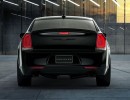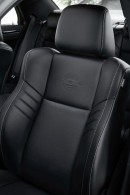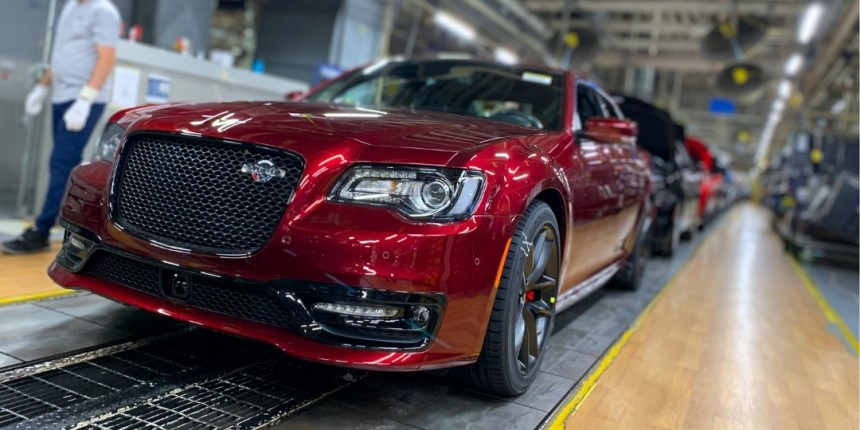The Chrysler 300 story began in the 1950s with the introduction of the 300-letter series for the 1955 model year. Though advertised as a personal luxury car, the C-300 was a wolf in sheep's clothing due to its 300-hp Hemi V8, namely the 331-ci FirePower.
The so-called letter series would be discontinued in 1966 after five generations, only to return for a single model year in 1970 as the Hurst 300. A meager 501 units were produced, all packing the 440-ci RB with 375 ponies on deck. Of those 501, two morphed into convertibles, of which one received the 426-ci Hemi referred to as the Elephant engine by aficionados.
Chrysler's non-letter series 300, which is alternatively called 300 Sport Series, rolled out in 1962 with bench seats rather than bucket seats. Revised in 1965, then again in 1969, the non-letter series would return in 1979 as an option package for the Cordoba. For some reason, Chrysler advertised it as a standalone model instead of the Cordoba 300.
Following the Malaise Era and the mild recession from the 1990s, what was then known as DaimlerChrysler launched a completely new type of 300 in 1998 for the 1999 model year. A full-size luxury car with a longitudinally-mounted engine and front-wheel drive that would make Volkswagen Group brand Audi blush, the 300M was a rather poor excuse for a 300. After all, DaimlerChrysler originally intended to sell this fellow as the Eagle Vision.
The 300 of the 21st century was penned and engineered during the DaimlerChrysler era, which can only be described as an uneasy alliance between two extremely different automakers. A more distinguished breed than the 300M due to its RWD platform, the 300 we all know and love wouldn't have been possible without Merc's technical assistance. In addition to chassis and suspension componentry borrowed or derived from the E-Class and S-Class, the 300 was also offered with a Merc-sourced V6 turbo diesel and the 5G-Tronic transmission.
A heavy update of the 300 was introduced in 2010 for model year 2011, an update so big that Chrysler even changed the platform's designation from LX to LD. This update also saw Fiat Chrysler Automobiles discontinue the slow-selling wagon, which was assembled by contract manufacturer Magna Steyr in Austria rather than FCA in Brampton, Ontario.
Speaking of Brampton, the final 300C of 2,200 ever produced has rolled off the assembly line. Known as Stellantis after the merger with Groupe PSA, what used to be called Fiat Chrysler Automobiles has also confirmed that 300 production will end by December 31. This, however, isn't necessarily bad news.
During Stellantis EV Day 2021, the American-Italian-French colossus teased a 300-like electric sedan with two electric drive units. The silhouette in question has a bit of Dodge Charger Daytona SRT concept to it, which leads us to believe that the 300's zero-emission successor will be made in Canada.
How come? If the yet-unnamed electric sedan is based on the STLA Large platform of the 2025 Dodge Charger, production will take place at the Windsor Assembly Plant or Brampton Assembly Plant. Back in June 2022, Stellantis confirmed that Windsor would be retooled for STLA Large-based vehicles as part of the automaker's long-term electrification plant. Brampton will be retooled for "an all-new, flexible architecture" as well, yet Stellantis hasn't said which platform specifically.
By flexible, it's easy to assume that we're dealing with both internal combustion and electric muscle. With the STLA Large-based 2025 Dodge Charger already confirmed to sport both internal combustion and electric powertrains, chances are that Brampton will make STLA Large vehicles, just like Windsor. Unfortunately, it's not currently known which of these facilities will handle 300 EV production.
Chrysler's non-letter series 300, which is alternatively called 300 Sport Series, rolled out in 1962 with bench seats rather than bucket seats. Revised in 1965, then again in 1969, the non-letter series would return in 1979 as an option package for the Cordoba. For some reason, Chrysler advertised it as a standalone model instead of the Cordoba 300.
Following the Malaise Era and the mild recession from the 1990s, what was then known as DaimlerChrysler launched a completely new type of 300 in 1998 for the 1999 model year. A full-size luxury car with a longitudinally-mounted engine and front-wheel drive that would make Volkswagen Group brand Audi blush, the 300M was a rather poor excuse for a 300. After all, DaimlerChrysler originally intended to sell this fellow as the Eagle Vision.
The 300 of the 21st century was penned and engineered during the DaimlerChrysler era, which can only be described as an uneasy alliance between two extremely different automakers. A more distinguished breed than the 300M due to its RWD platform, the 300 we all know and love wouldn't have been possible without Merc's technical assistance. In addition to chassis and suspension componentry borrowed or derived from the E-Class and S-Class, the 300 was also offered with a Merc-sourced V6 turbo diesel and the 5G-Tronic transmission.
Speaking of Brampton, the final 300C of 2,200 ever produced has rolled off the assembly line. Known as Stellantis after the merger with Groupe PSA, what used to be called Fiat Chrysler Automobiles has also confirmed that 300 production will end by December 31. This, however, isn't necessarily bad news.
During Stellantis EV Day 2021, the American-Italian-French colossus teased a 300-like electric sedan with two electric drive units. The silhouette in question has a bit of Dodge Charger Daytona SRT concept to it, which leads us to believe that the 300's zero-emission successor will be made in Canada.
How come? If the yet-unnamed electric sedan is based on the STLA Large platform of the 2025 Dodge Charger, production will take place at the Windsor Assembly Plant or Brampton Assembly Plant. Back in June 2022, Stellantis confirmed that Windsor would be retooled for STLA Large-based vehicles as part of the automaker's long-term electrification plant. Brampton will be retooled for "an all-new, flexible architecture" as well, yet Stellantis hasn't said which platform specifically.
By flexible, it's easy to assume that we're dealing with both internal combustion and electric muscle. With the STLA Large-based 2025 Dodge Charger already confirmed to sport both internal combustion and electric powertrains, chances are that Brampton will make STLA Large vehicles, just like Windsor. Unfortunately, it's not currently known which of these facilities will handle 300 EV production.









































